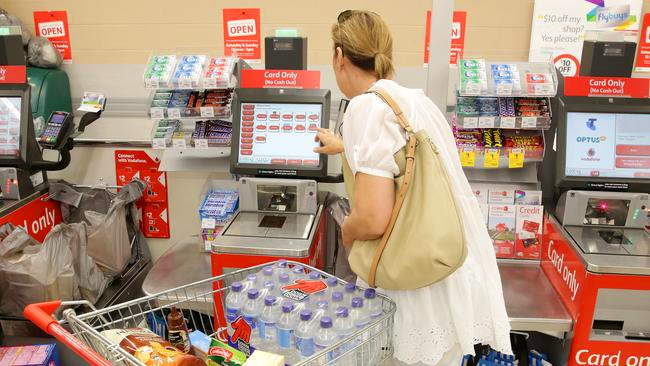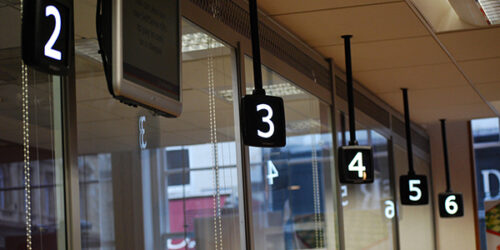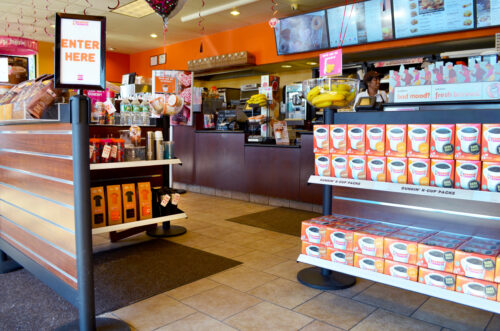- Home
- Sectors
- Solutions
- Tensabarrier®
- Tensator® Charging Stations
- Tensamedia® Wayfinding and Signage
- Lawrence® Post & Rope
- Tensator® Airport Passenger Guidance System
- Electronic Queuing – eQ™
- Tensaguide® Modular Barrier System
- Tensator Micam Protection – TMP
- Safety Solutions
- Access Control
- In-Queue Merchandising
- Holographic Virtual Assistant
- Virtual Queuing – VQMS
- Custom & Bespoke Solutions
- Resources
- About
- Contact Us
- Shop
 English (English)
English (English)
21
Sep

Self‐checkouts are clearly all about giving customers more choice, speed and convenience while reducing queuing times and staff hours. Additionally, they reduce the potential for human error by calculating change automatically.
Some studies show not all shoppers like them, either because they find automated tills confusing, or because they prefer interacting with a real person.
Indeed, our own survey of 2013 found that a third of shoppers walked away without making their planned purchases due to poor experiences with these solutions.
Meanwhile, a whopping 84% admitted needing help from a staff member, and more than 40% complained about technical hitches at automated checkout points.
More recently, however, research is starting to suggest that customers now prefer checking out their own purchases. (One study released earlier this year found just 2% of shoppers were unfamiliar with the technology.)
Self‐service checkouts have been around for some years now and, love them or loathe them, they’re here to stay, especially in supermarkets. Globally, one figure has estimated there would be over one million by 2025.
In recent months, these systems have come into their own as people return to work post‐pandemic and big weekly shops are increasingly replaced by smaller, more frequent trips to buy groceries, for example on the commute home. (Equally, when people have been in‐store over the pandemic, they’ve wanted to leave as briskly as possible to reduce exposure to potential infection.) So these solutions have become as familiar as our toothbrush to most of us.
That’s not, of course, to say that there’s no room for improvement. With many staff interventions still necessary, for example, there is some way to go before transactions are fully automated.
What’s more, touchscreens could involve fewer touches, or none at all, not least given the current climate, while processing non‐barcoded items like vegetables and some baked goods could be sleeker and quicker.
And it’s always worth making sure you’re doing all you can to promote discounts and special offers via your automated sales points.
Finally of course, there are the infamous and still‐present issues with items in the bagging area …
We have the technology to help improve the self-checkout experience…
But the technology to iron out potential glitches has already improved significantly. One leading supermarket, for example, introduced a measure to calculate the shopper’s savings as items are they’re scanned, rather than at the end, to help give customers an idea of what they need to pay at an earlier stage.
Here are some of the products we offer to make the experience smoother all round:
1. Automatic Call forward
It’s frustrating to make your way to an apparently available self-checkout only to find that it’s out of order or only accepting a payment method that you weren’t prepared for. Automatic call forward systems use digital signage to call you to the next available (working!) self-checkout and can tell you what payment methods it’s accepting. This takes the stress out of that awkward moment when all eyes are on you at the front of the queue and you’re trying to spot an available self-checkout quickly without holding up the rest of the line.

2. Telescopic posts
These raise signage above eye‐level to give clearer messaging about social distancing, which remains important as customers queue to use your self‐service checkouts.
3. Post‐top signage
Available in different sizes and in reusable or fully recyclable, plastic-free designs, our sign holders go on the top of any of our barriers so that you can communicate at a glance with your customers, giving them information or promoting a special offer.
4. InQ‐Totem®
InQ-Totem® is our highly visible, customisable social distancing signage solution solution available with or without integrated digital screens.
5. InQ-tv®
Offering the ability to communicate both audibly and visually with customers waiting in the queue to use self-checkouts, InQ-tv® screens sit atop IQM® panels and shelves and can be used to advertise the items available for sale below or alternatively to communicate other promotional or informational messages.
6. InQueue Merchandising (IQM®)
Transforming the self-checkout queuing area in to additional shopping space. InQueue Merchandising (IQM®) offers a variety of different shelves, fixtures and accessories create a power impulse zone, an area where self-checkouts perform poorly when compared to highly merchandisable staffed checkouts.

How we can help
It’s fair to say they are a work in progress, but at Tensator we believe self‐service tills can be a win for both retailer and customer when used correctly and in conjunction with the best technology and queueing solutions.
Download our Retail brochure to find out the many ways in which we could help your retail brand, or alternatively contact us directly.




